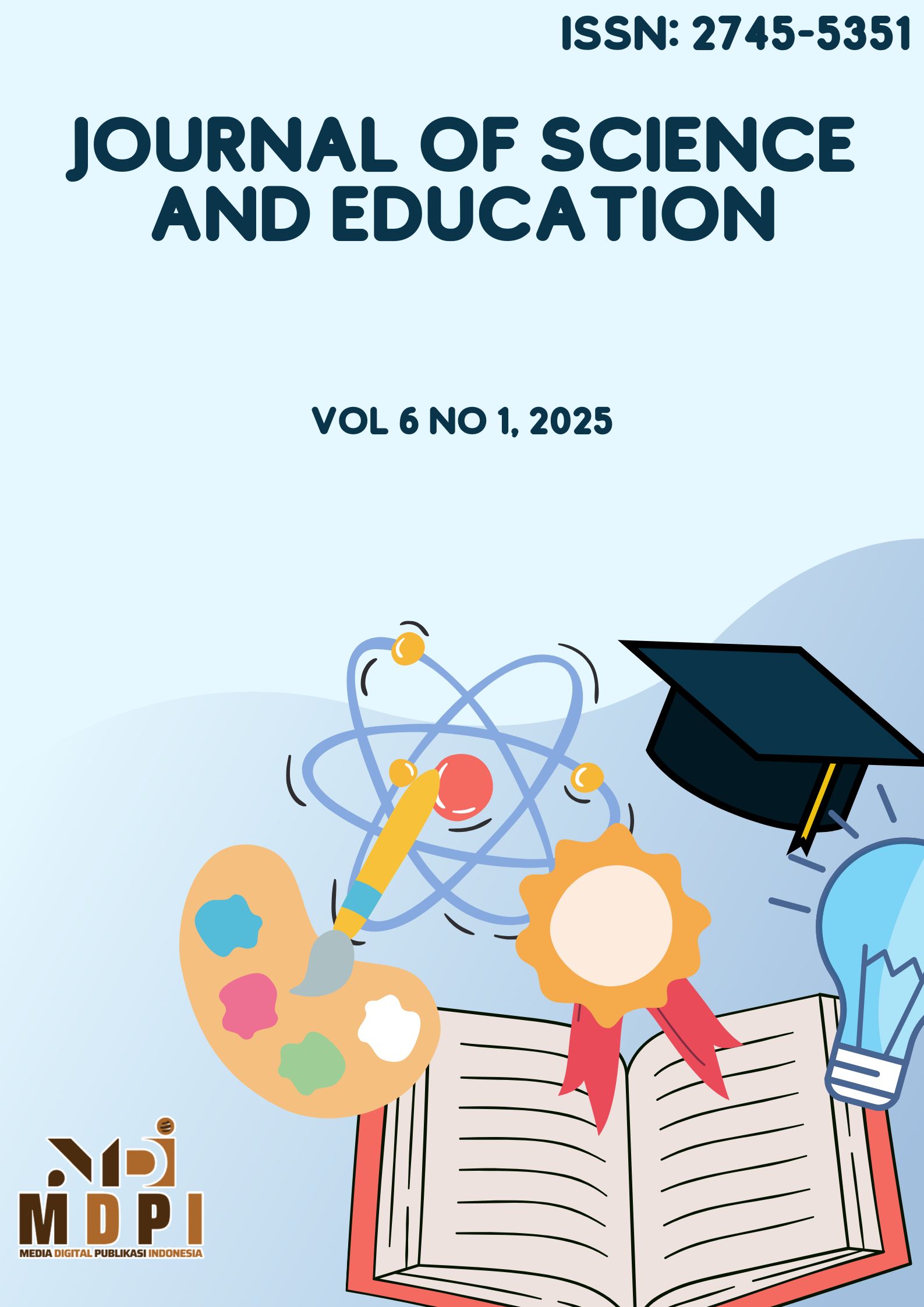Challenges of Elementary Education: Curriculum Incompatibility Towards Students Learning Motivation at Bangbayang Elementary School
DOI:
https://doi.org/10.58905/jse.v6i1.614Keywords:
curriculum, learning motivation, basic education, elementary school students, incompatibilityAbstract
This study aims to examine the challenges faced in implementing the curriculum at the elementary school level, particularly regarding the incompatibility of the curriculum with the learning motivation of students at SDN Bangbayang. The method used is a descriptive qualitative approach with data collection techniques through observation, interviews, and documentation. The results of the study show that most of the material in the curriculum has not been fully adapted to the local context, interests, and learning needs of students. This has an impact on the lack of learning motivation, active participation, and student involvement in the learning process. In addition, limited resources and teacher training in implementing the curriculum flexibly are also inhibiting factors. This study recommends the need to adjust the curriculum based on student needs and teacher training so that learning is more contextual and motivating. Thus, it is hoped that a more relevant curriculum can improve the quality of education and encourage students to be more active in learning. This adjustment is also important to create a learning environment that is more inclusive and responsive to student needs.
Downloads
References
Government of Indonesia. (2023). Law on Internal Quality Assurance, Number 53 of 2023. State Gazette of the Republic of Indonesia Year 2023 Number 53..
MASKUR, M. (2023) ‘The Impact of Curriculum Change on Elementary School Stu-dents’, Journal of Teacher Training and Education (JKIP), 1(3), pp. 190–203. Available at: https://doi.org/10.61116/jkip.v1i3.172.
Anita, A., Fadhila, HIA, Muhsin, M., Febrianti, N., Jamilah, S., & Pratiwi, DA (2025). Challenges of Teacher Adaptation in the Implementation of the Independent Curricu-lum at SDN Semangat Dalam 2. MARAS: Journal of Multidisciplinary Research , 3 (2), 608-618.
Ulinniam, Hidayat, & Barlian, UC (2021). Implementation of the 2013 Revised Curric-ulum During the Pandemic at SMK IBS Tathmainul Qullub Indramayu. Indonesian Journal of Education, 2(1), 118–126
Mandasari, NK, Harahap, NM, & Humayroh, AP (2025). Analysis of the Implementa-tion and Challenges of the Independent Curriculum for Teachers at SDN 101766 Ban-dar Setia. Sadewa Journal: Publication of Educational Sciences, Learning, and Social Sciences, 3(2), 63–70.
Rahmatulloh, G., Ghani, A., Mustofa, M., Octafiona, E., & Isti'ana, A. (2025). The Ef-fect of the Implementation of the Independent Curriculum and Learning Environment on Student Learning Motivation in Vocational High Schools. JIIP-Scientific Journal of Educational Sciences , 8 (1), 807-812.
Mulkan, LM, & Zunnun, LMA (2024). Curriculum Implementation Analysis: Challeng-es and Strategic Solutions in the Educational Environment. PRIMER: Multidisciplinary Scientific Journal , 2 (2), 112–120. https://doi.org/10.55681/primer.v2i2.324
Magfirah, NR, Yurfiah, Y., & Syamsurijal, S. (2024). Analysis of Factors Influencing Learning Motivation of Fourth Grade Students in the Implementation of the Independ-ent Curriculum in Elementary Schools. Prose: Journal of Elementary School Teacher Education Research , 2 (3), 923-932.
Utari, D., & Putra, ED (2021). Analysis of Learning Motivation of Second Grade Stu-dents in Public Elementary Schools. Qalamuna: Journal of Education, Social, and Reli-gion, 13(2), 491–502. https://Doi.Org/10.37680/Qalamuna.V13i2.1015.
Ni'mah Afif, Z., & Fatmawati, N. (2024). Curriculum Management of Entrepreneurship Learning Programs in Vocational High Schools. At Tadbir: Islamic Education Manage-ment Journal, 2(1), 66–77. https://doi.org/10.54437/attadbir.v2i1.1624.
Fadli, MR (2021). Understanding qualitative research method design. Humanika, 21(1), 33–54. https://doi.org/10.21831/hum.v21i1.38075
Ahmad, TP (2024). Planning meaningful learning and independent curriculum assess-ment. Scientific Journal of Pedagogy , 20 (1), 75–94.
Maryono, & Budiono, H. (2020). Basicedu Journal. Basicedu Journal,. Basicedu Jour-nal , 5 (5), 3 (2), 524–532. https://journal.uii.ac.id/ajie/article/view/971
Alfiah, S., Istiyati, S., & Mulyono, H. (2021). Analysis of the causes of low learning motivation in social studies learning for fifth-grade elementary school students. Did-aktika Dwija Indria , 9 (5), 1–5. https://doi.org/10.20961/ddi.v9i5.49328
Marwan, M. (2023). Teacher and Student Responses to the Implementation of the In-dependent Curriculum in Islamic Religious Education Learning at SMKN 1 Puloampel. Rabbani: Journal of Islamic Religious Education, 4 (1), 40–50. https://doi.org/10.19105/rjpai.v4i1.8030
Putri, RA, & Handayani, SL (2021). Development of Android-Based SiMach Land Me-dia in Elementary Schools. Basicedu Journal, 5 (4), 2541–2549. https://doi.org/10.31004/basicedu.v5i4.1230.
Indriaty, D., Astriani, D., Sabrifha, E., & Aqilla, L. (2025). Educational Policy Strate-gies in Facing Social and Cultural Inequality . 5 (2), 551–565.
Sahib, Abdul. "Analysis of Factors Contributing to Low Student Learning Motivation." Journal of Education and Instruction 3.1 (2020): 304-312.
Ananda, A.P. and Hudaidah, H. (2021) ‘The Development of Education Curriculum in Indonesia from Time to Time’, SINDANG: Journal of History Education and Historical Studies, 3(2), pp. 102–108. Available at: https://doi.org/10.31540/sindang.v3i2.1192
Downloads
Published
How to Cite
Issue
Section
License
Copyright (c) 2025 Rahmania Khoerunnisa, Dewitri Yulianti, Rifky Aditya Ramadhan

This work is licensed under a Creative Commons Attribution-ShareAlike 4.0 International License.

















